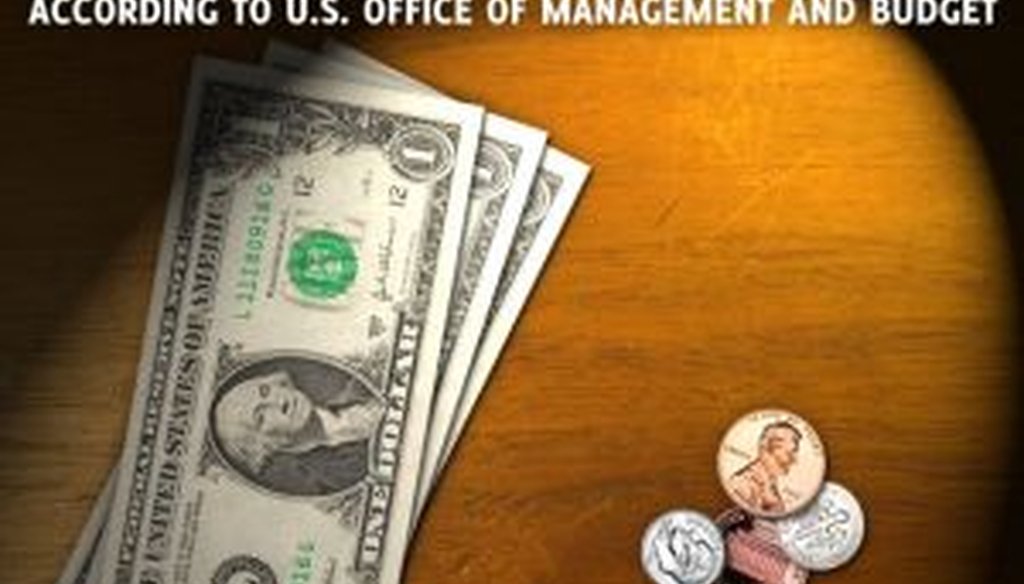

Our only agenda is to publish the truth so you can be an informed participant in democracy.
We need your help.


We received this Facebook post from a reader. Is it correct?
A reader recently forwarded us a Facebook post that sought to blame corporations for not carrying their fair share of the tax burden. It read, "According to the Office of Management and Budget, back in 1950, corporations paid $3 in taxes for every $1 by a worker. Today, they pay 22 cents for every $1 by a worker."
We wondered whether that was true.
The Facebook post was credited to an activist group called "The Other 98 Percent," which describes itself as at the forefront of a "new movement to kick corporate lobbyists out of D.C., hold our elected officials accountable, and fix our democracy to make Washington work for the other 98% of us." We tried to reach the group through its website but did not receive a response.
The Facebook post cited the Office of Management and Budget -- the executive branch’s budget-policy arm -- but it didn’t get any more specific than that. When we went to OMB’s website, we found some historical data that addresses this claim.
The simplest ratio to use is the ratio of corporate income taxes paid to individual income taxes paid. In 1950, corporations paid 66 cents in income taxes for every dollar of income taxes paid by individuals -- nowhere near the ratio claimed in the Facebook post. In 2011, corporations paid 17 cents in income taxes for every dollar in income taxes paid by individuals. That’s not exactly 22 cents, but it’s in the ballpark.
By this measurement, then, the Facebook post is misleading. It’s true that the share of income taxes paid by corporations has declined over the years, but not as dramatically as the post suggests. In addition, it was never the case in 1950 that corporate income taxes even equaled the level of individual income tax revenues, much less tripled them.
You can also use a more detailed ratio. Under this formula, total corporate taxes consists of corporate income taxes plus the employer’s share of payroll taxes. Individual taxes consist of individual income taxes, plus the employee’s share of the payroll tax, plus excise taxes (such as levies on alcohol, tobacco, telecommunications and gasoline), plus the estate tax.
Using this formula, the ratio in 1950 was 48 cents paid by corporations for every dollar paid by workers -- even more incorrect than it was using our first calculation. In 2011, the ratio was 37 cents paid by corporations for every dollar by workers.
So using these numbers, the Facebook post is misleading as well.
"The assertion is plain wrong," said Roberton Williams, a senior fellow at the Urban Institute-Brookings Institution Tax Policy Center.
"This seems to be a very flippant comment without any basis," agreed William McBride, an economist at the Tax Foundation, a business-backed group that studies tax issues.
Part of the reason for the shift from corporate taxes to individual taxes is that a significant chunk of individual taxes are actually, in effect, business taxes, since more business owners have chosen to be taxed as individuals rather than as corporations, McBride said. If it were possible to reliably separate out such taxes and shift them from the individual column to the corporate column, the premise of the Facebook post would likely be further weakened.
Our ruling
The one thing the Facebook claim gets right is that corporations are carrying less of the burden for taxation now compared to 1950. But the difference is not nearly as dramatic as the Facebook post indicates, and its numbers are wide of the mark. On balance, we rate the claim Mostly False.
Facebook post, received June 2012
Office of Management and Budget, Table 2.1—Receipts by Source: 1934–2017, accessed July 2, 2012
Office of Management and Budget, Table 2.4—Composition of Social Insurance and Retirement Receipts and of Excise Taxes: 1940–2017, accessed July 2, 2012
Office of Management and Budget, Table 2.5—Composition of "Other Receipts": 1940–2017, accessed July 2, 2012
Tax Foundation, "Social Security and Medicare Tax Rates, Calendar Years 1937 - 2009," accessed July 2, 2012
Email interview with William McBride, economist at the Tax Foundation, July 2, 2012
Email interview with Roberton Williams, senior fellow at the Urban Institute-Brookings Institution Tax Policy Center, July 3, 2012
In a world of wild talk and fake news, help us stand up for the facts.
